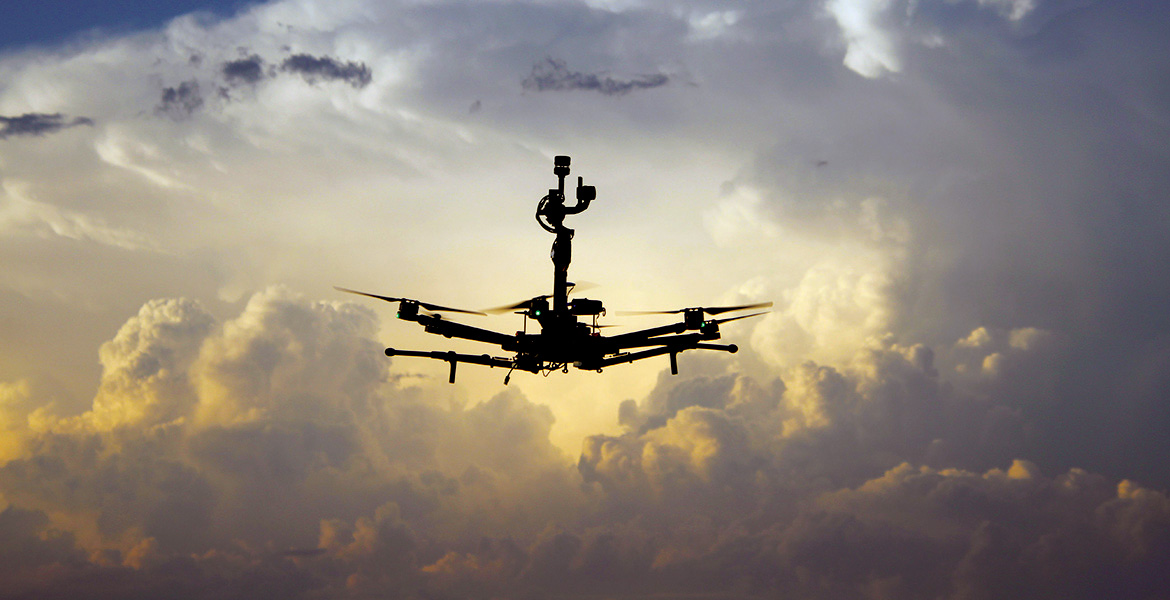
Rep. Ryan Martinez, R-Edmond, on Monday held an interim study on advance air mobility (AAM) before the House Technology Committee.
He invited state leaders to speak on the topic. Presenters from other states also shared their experiences in this emerging field, which includes unmanned aerial vehicle (UAV) technology, consumer product and passenger delivery, as well as air defense and other areas.
“This is an issue that is near and dear to my heart,” Martinez told attendees. “I think this is really an opportunity for Oklahoma to be a leader when it comes to advance air mobility. We are already doing some pretty great things. So, this was an opportunity for us to hear about some of those things and how we can help this industry grow in Oklahoma.”

James L. Grimsley, executive director of Advanced Technology Initiatives with the Choctaw Nation of Oklahoma and a transportation commissioner with the Oklahoma Department of Transportation, spoke about efforts to help advance UAV operations safely into the national aerospace system.
He and other presenters said UAVs and other AAM benefit society in a variety of ways, from agriculture to energy to weather to public safety, even to health care by extending the reach of services. And they can help improve quality of life.
Among other benefits, we are finding that UAV can reduce the risk of injury to workers, improve productivity, and assist first responders, Grimsley said.
Several presenters showed a much wider scope of AAM. WISK Aero, for instance, in 2017, became the first in the US. to successfully fly an autonomous air taxi. Nathan Millicam with Electric Power Systems gave an overview of aviation electrification in the state of Utah, explaining how electric powertrains could make general aviation competitive with ground-based transportation.
Study attendees also heard from Texas State Rep. David Cook and Utah State Rep. Adam Robertson, who also is with Fortem Technologies, as well as an industry panelist from AEI HorizonX.
Several presenters spoke of how UAVs and other AAM can move along existing transportation corridors such as highways or railroad tracks, avoiding air congestion and private property concerns.

Jarred Esselman, Director of Aeronautics with the state of Utah, said people don’t want unmanned craft flying over their backyards or filming what’s happening in their backyards. They also prefer not to see or here the technology, he said.
Martinez acknowledged there would need to be some work to get people culturally used to the technology.
Despite advancements, however, Grimsley said overall the state’s regulatory system for AAM is lagging behind the pace of technological advances. The state also is very patchwork in its approach, hindering the industry unnecessarily. He said the state needs an action plan and must be transparent with the public to alleviate privacy concerns. The state also needs to look beyond its boundaries and partner with other states in the region, he said.
Grayson Ardies, director of Aeronautics for the Oklahoma Aeronautics Commission, said Oklahoma was a pretty forward-thinking leader on unmanned aerial systems (UAS) back in 2010-12, but after that, the state plateaued. Thankfully, he said we’ve transitioned from fighting off legislation that would hurt the industry to passing legislation that helps.
House Bill 2599, passed in 2016, for instance, created civil liability for critical infrastructure – making sure that UAS and critical infrastructure could live harmoniously without interfering with each other, he said. Senate Bill 1688 from 2020, created the Advance Mobility Pilot Program, which is moving forward. The council created by the legislation will be seated in the next few months under the state’s secretary of transportation. Senate Bill 659 designated the Oklahoma Aeronautics Commission as the UAS clearinghouse. All of these are pointing Oklahoma in the right direction, he said.
“We are starting to make the inroads of can we develop this plan to go forward,” Ardies said.
He said an interim study last year, in which states such as North Carolina, Virginia and Ohio presented, along with Monday’s study, are helping Oklahoma take the next steps.
Ardies said there’s no better time to get into aeronautics and he encouraged state policy makers to take advantage of what he said is a marketing campaign unseen since the space race or the Cold War.
Ardies also spoke about future workforce needs, and said it’s the number one question he faces when talking to companies interested in moving to Oklahoma – where will they get the people to fill the jobs?
There is curriculum now in 31 Oklahoma high schools that is getting students excited about futures in UAV technology, engineering and other fields, he said. The state’s CareerTech and higher education systems also are working to meet the demand, he said, but the issue is a big deal.
Dr. Jamey Jacob, a professor of mechanical and aerospace engineering at Oklahoma State University, spoke to this as well. He said OSU has made advance air mobility a core focus of its institution and the university has the largest aerospace engineering program in Oklahoma, doubling enrollment in the program over the last 10 years by over 200 new students.
OSU also is the first institution in the nation to offer advanced engineering degrees at the graduate level, and the university will open the Oklahoma Aerospace Institute for Research and Education to support partnerships between the university, commercial interests and military and government agencies and serve as a resource in development the state’s aerospace ecosystem.
Source: House release





